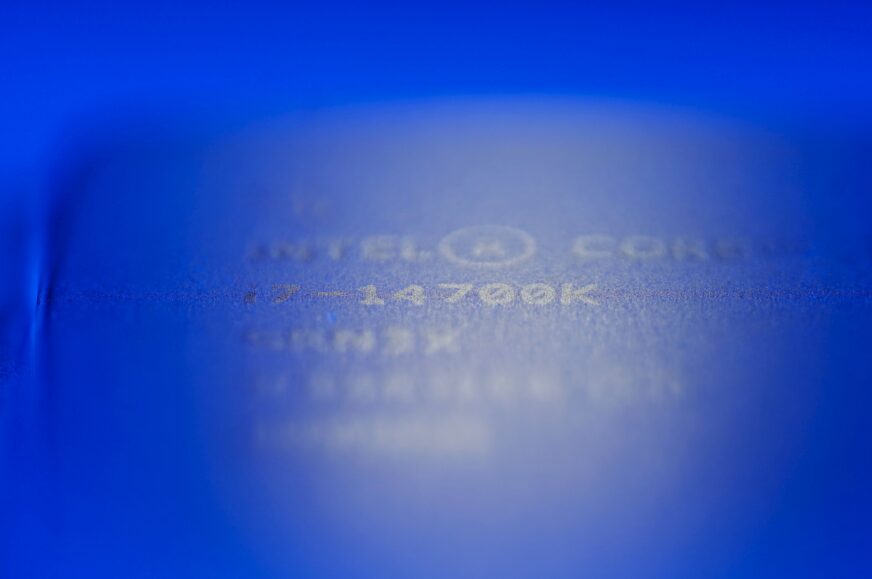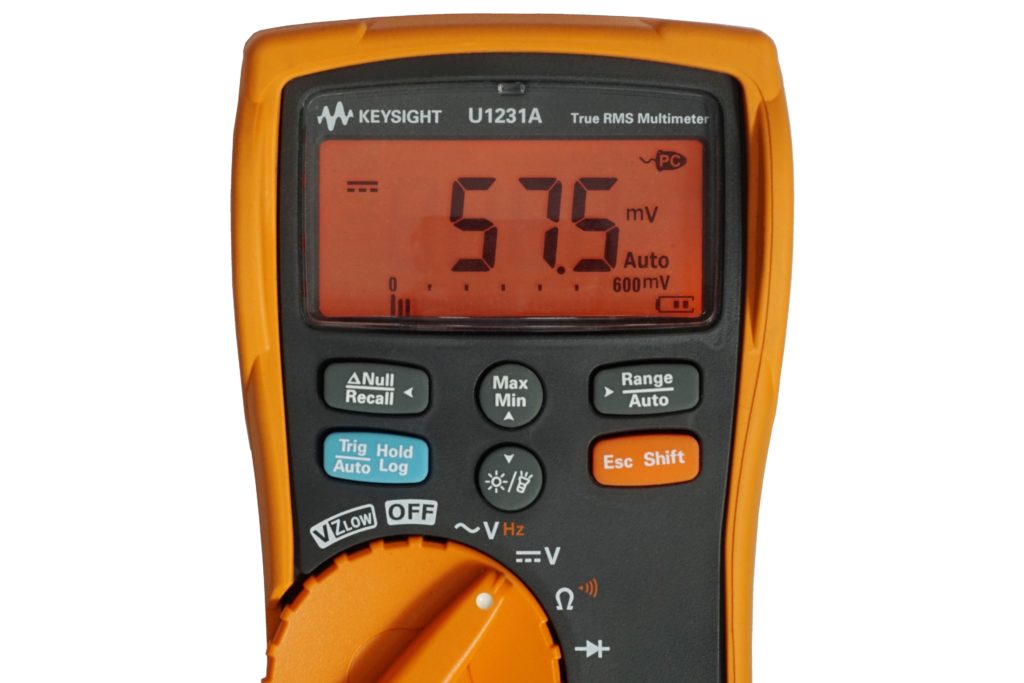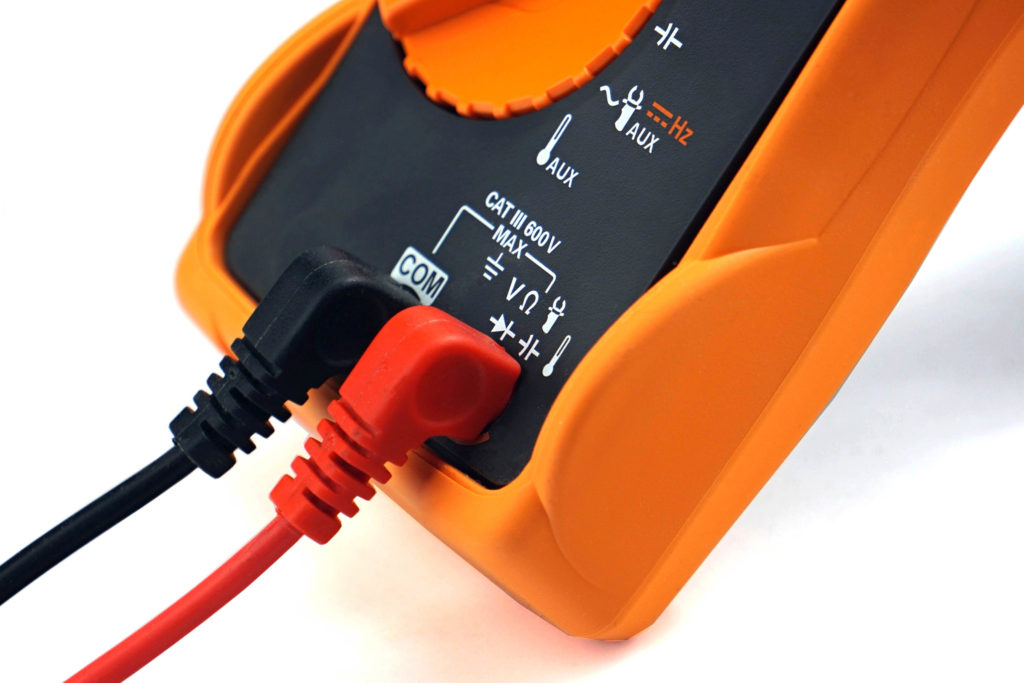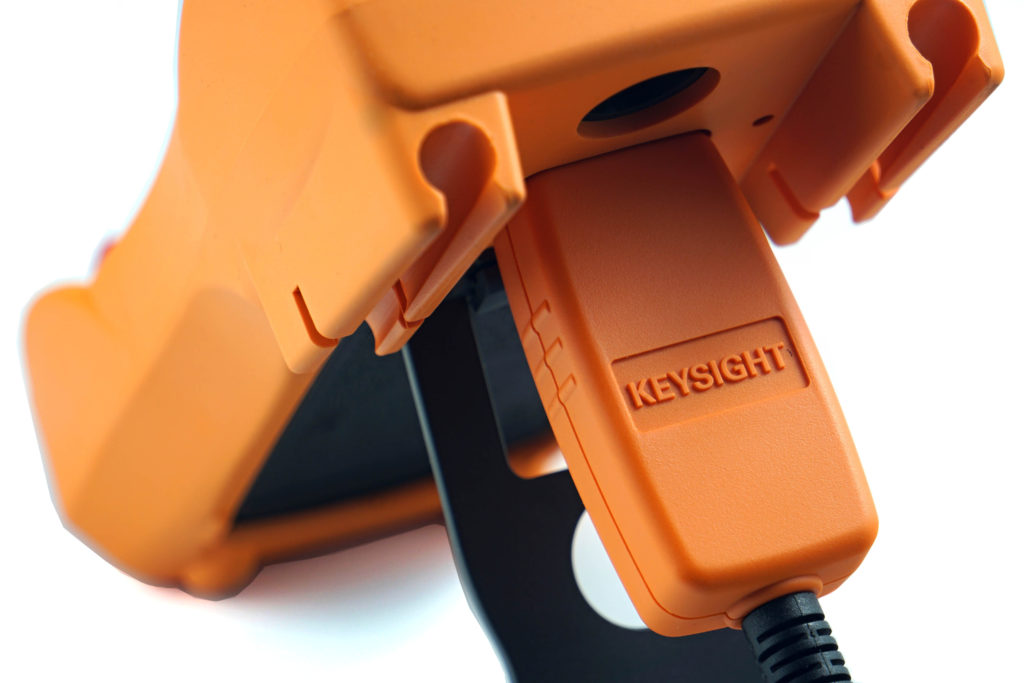Methodology: how we measure power draw
The Core i7-14700K processor is the only 125-watt model from the Intel Raptor Lake-S Refresh generation that has undergone a core configuration change between generations. With more “efficient” ones, this processor is halfway to the Core i9-(14900K/13900K), but at the price of a Core i7. The Ci7-14700K is thus significantly more powerful than the Ci7-13700K for the same money. Especially in heavy multi-threaded workloads.
Methodology: how we measure power draw
Measuring CPU power consumption is relatively simple, much easier than with graphics cards. All power goes through one or two EPS cables. We also use two to increase the cross-section, which is suitable for high performance AMD processors up to sTR(X)4 or for Intel HEDT, and in fact almost for mainstream processors as well. We have Prova 15 current probes to measure current directly on the wires. This is a much more accurate and reliable way of measuring than relying on internal sensors.
The only limitation of our current probes may be when testing the most powerful processors. These already exceed the maximum range of 30 A, at which high accuracy is guaranteed. For most processors, the range is optimal (even for measuring a lower load, when the probes can be switched to a lower and more accurate range of 4 A), but we will test models with power consumption over 360 W on our own device, a prototype of which we have already built. Its measuring range will no longer be limiting, but for the time being we will be using the Prova probes in the near future.
The probes are properly set to zero and connected to a UNI-T UT71E multimeter before each measurement. It records samples of current values during the tests via the IR-USB interface and writes them in a table at one-second intervals. We can then create bar graphs with power consumption patterns. But we always write average values in bar graphs. Measurements take place in various load modes. The lowest represents an idle Windows 10 desktop. This measurement takes place on a system that had been idle for quite some time.
Audio encoding (FLAC) represents a higher load, but processors use only one core or one thread for this. Higher loads, where more cores are involved, are games. We test power consumption in F1 2020, Shadow of the Tomb Raider and Total War Saga: Troy in 1920 × 1080 px. In this resolution, the power consumption is usually the highest or at least similar to that in lower or higher resolutions, where in most cases the CPU power draw rather decreases due to its lower utilization.
Like most motherboard manufacturers, we too ignore the time limit for “Tau”, after which the power consumption is to be reduced from the PL2 boost limit (when it exceeds the TDP) to the TDP/PL1 value, recommended by Intel, in our tests. This means that neither the power draw nor the clock speed after 56 seconds of higher load does not decrease and the performance is kept stable with just small fluctuations. We had been considering whether or not to respect the Tau. In the end, we decided not to because the vast majority of users won’t either, and therefore the results and comparisons would be relatively uninteresting. The solution would be to test with and without a power limit, but this is no longer possible due to time requirements.
We will pay more attention to the behavior of PL2 in motherboard tests, where it makes more sense. We always use motherboards with extremely robust, efficient VRM, so that the losses on MOSFETs distort the measured results as little as possible and the test setups are powered by a high-end 1200 W BeQuiet! Dark Power Pro 12 power supply. It is strong enough to supply every processor, even with a fully loaded GeForce RTX 3080, and at the same time achieves above-standard efficiency even at lower load. For a complete overview of test setup components, see Chapter 5 of this article.
- Contents
- Intel Core i7-14700K in detail
- Methodology: performance tests
- Methodology: how we measure power draw
- Methodology: temperature and clock speed tests
- Test setup
- 3DMark
- Assassin’s Creed: Valhalla
- Borderlands 3
- Counter-Strike: GO
- Cyberpunk 2077
- DOOM Eternal
- F1 2020
- Metro Exodus
- Microsoft Flight Simulator
- Shadow of the Tomb Raider
- Total War Saga: Troy
- Overall gaming performance
- Gaming performance per euro
- PCMark and Geekbench
- Web performance
- 3D rendering: Cinebench, Blender, ...
- Video 1/2: Adobe Premiere Pro
- Video 2/2: DaVinci Resolve Studio
- Graphics effects: Adobe After Effects
- Video encoding
- Audio encoding
- Broadcasting (OBS and Xsplit)
- Photos 1/2: Adobe Photoshop and Lightroom
- Photos 2/2: Affinity Photo, Topaz Labs AI Apps, ZPS X, ...
- (De)compression
- (De)encryption
- Numerical computing
- Simulations
- Memory and cache tests
- Processor power draw curve
- Average processor power draw
- Performance per watt
- Achieved CPU clock speed
- CPU temperature
- Conclusion













Majority tends to hate 14th gen (no progress etc), but it’s almost totally win-win generation: it reduces “unnoticeably slower” 13th gen prices; Intel’s partners like DELL are happy to get next-gen CPUs for their next-gen computers and Intel himself can boast that they supported LGA 1700 with three generations. Cherry on top is 14700K which offers almost maximum performance of 1700 for only i7 money. Now let’s wait for lower-end chips – already 13th gen beats here AMD with multicore performance combined with option to go cheaper DDR4 route what is sensible for lower-end workstation builds. That’s why I see 14th gen as almost totally win-win. Almost because only losers here will be reselling values of most of 1700 chips (especially massacrated by 14700K itself), but it’s natural downside of longer socket support.
Thanks for the addition. The explicit specification of the Ci7-14700K suitability for cheaper workstations with DDR4 memory is probably missing in the text of our article. And yet in this respect, as long as all 20 cores scale, there really is no alternative with a comparable price/performance ratio.
It seems to me that most of the commercial reviewers put a lot of emphasis on the high power draw, which is, of course, a fact, but there is a little bit of a “B” missing in the fact that at lower, for example, gaming loads, the power efficiency with Ryzen 9 is comparable or even more attractive (in a single-threaded load). And who doesn’t like the 300W, can adjust the power limits at will and in many multi-threaded applications the Ci7-14700K will still be on top compared to the R9 7900X even at the same power draw. We have not tested this situation (Ci7-14700K vs. R9 7900X) directly at lower power draws, but if you look at our motherboard tests, you will see that the Core i9-13900K is only a couple % slower at PL2 limited to the TDP level (125 W) compared to the R9 7950X with a TDP of 105 W (PPT of 142 W). And I feel the difference between Core i7-14700K and Ryzen 9 7900X will be even smaller.
Intel just took from AMD their few years ago signature multicore performance for the money. Especially with equipping lower-to-mid-range chips with plenty of e-cores allowing them to beat here R5 and R7.
Problem with awful power draw, it’s mostly about these chips just being able to pull crazy numbers when ulimited. My 13900K scores in CB23 Multi ~35500 points with PL1=PL2=200W. Scoring even 41000 or having the heaviest on multicore tasks done 15% faster for the price of 300+W attacing me; needing damn AiO and way more noise to handle it? Bad deal to me. Or another fun fact in terms of efficiency: 13900K can give performance of unltimited 13700K for just half of i7’s power draw. Tests show 13700K needing to pull at least 250W to score up to 31K, but my chip did exactly 30766 with PL1=PL2=125W – quite unusual perspective, but potentially attractive in terms of heat; noise or eco.
Ryzens 7000 are amazing in energy efficiency and, if I remember well, 7950X is even better than 13900K here, but not many add here that Ryzens also tend to be harder to cool. Some polish youtuber made a graph showing maybe even these exact chips power normalized on various levels and how hot they get then. Ryzen pulling the same power tends to be ~10C hotter. I rather don’t watch him, so don’t know how reliable are his numbers, but such tendency is quite known. And it makes Ryzen’s eficiency not just better, but coming with stinky addition of higher noise and temperatures. Reducing them to Intel’s level would somehow melt this better efficiency…